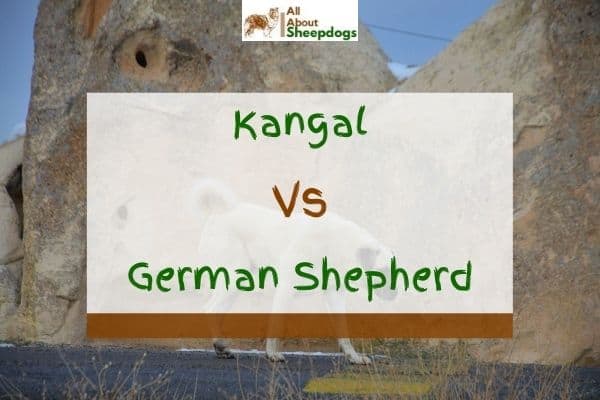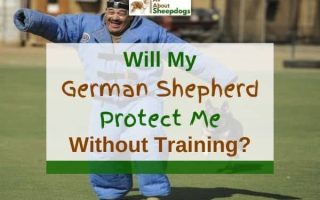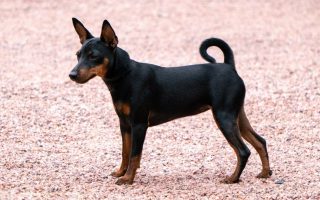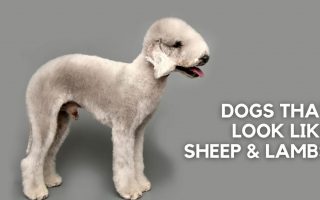Kangal Vs German Shepherd! Why would anyone want to compare these 2 dog breeds?
They are both amazing dogs to have around, right?
However, there’s more to these dog breeds than what meets the eye.
So, if you cannot seem to solve the dilemma on which one to adopt, then worry not as I got you covered.
I will provide you with both of these 2 dog breeds’ histories, physical appearance, lifespan, health conditions, nutritional requirements, and grooming needs.
And to make sure that it’s super easy for you to decide which dog to adopt, I have selectively made a list of the main differences between these 2 dog breeds at the end of the article.
| Attributes | Kangal | German Shepherd |
| Good For First Time Owners | No | Yes |
| Good Guard Dog | Yes | Yes |
| Apartment Friendly | No | Yes |
| Good Family Dog | With Training | With Training |
| Shedding | Moderate To High | High |
| Barking And Howling | Moderate To High | Moderate To High |
| Height | 28-32 inches (71.5-81 cm) | 22-26 inches (55-65 cm) |
| Average Life Expectancy | 12-15 Years | 9-13 Years |
[wpsm_toplist]
Kangal – Dog Breed Information
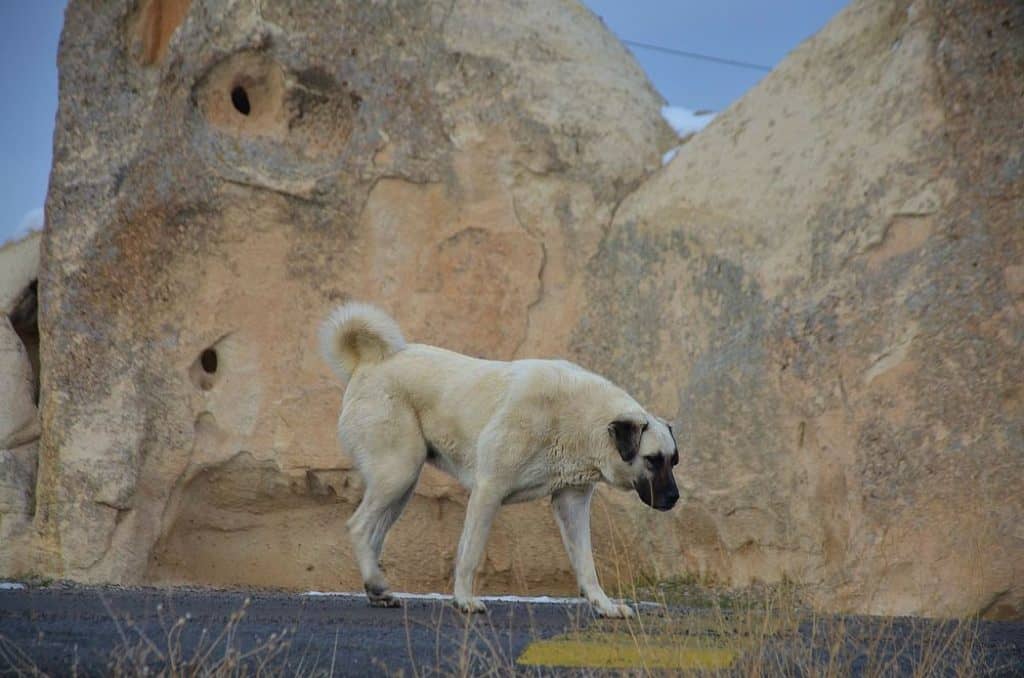
The Kangal dog breed is NOT the same as the Anatolian shepherd dog breed.
History And Physical Appearance
The Kangal dog breed has its origins traced back to Sivas, Turkey, around 700 AD.
This dog breed was bred to work as a guardian of the sheep and the people.
Kangals are a large-sized dog breed that can grow to a height of 28-32 inches and weigh around 38- 68 kgs as adults.
Its short, dense double coat comes in a variety of colors.
However, fawn and sable are the only acceptable coat colors.
Its almond, or sometimes oval-shaped medium-sized brown or dark eyes, floppy ears, large but proportional skull, tapering muzzle, prominent nose, and deep chest gives this dog breeds its distinctive features.
Lifespan And Health Conditions
The Kangals have a life expectancy of 12-15 years.
Kangals are, in fact, among the healthiest dog breeds in the world. They are known to have very few medical health conditions.
These medical conditions include; Hip dysplasia, entropion (eyelid deformity), and lipoma (noncancerous tissue growth/lump on their skin).
Nutritional Requirements
It’s vital that you feed your Kangal with a kibble dog diet.
A kibble dog diet is a nutritionally healthy diet as it contains enough proteins, vitamins, and starches, all of which are important for a growing or an adult Kangal.
Consider supplementing its kibble diet with cooked meat or eggs. Also, don’t forget to give it boiled bones at least 2-3 times in a week.
Grooming Needs
A once in 2 months bath is all it takes to maintain your Kangal’s lustrous coat.
Make sure that you at least brush its hair with a rounded tipped and firm dog brush 3 times in a week.
Regular brushing will not only keep your Kangal’s coat tangle-free but will also help reduce its shedding potential.
Pro-tip; After brushing its hair, always run your fingers on its coat to feel for any spot that you might have left out.
Also, avoid washing your Kangal in a bath tab due to its large size; which can make the bathing experience difficult for both you and your hound.
Consider bathing it in an enclosed room. Place an anti-slippery mat to avoid slipping accidents.
Temperament
Kangals are known for their self-discipline, alertness, protective, independent, and calm nature.
However, these hounds can easily become strong-willed and aggressive when not properly socialized and trained in their obedience commands as pups.
These temperaments make this hound suitable for an experienced dog owner, who can firmly train this dog how to obey commands.
So, if you are a newbie dog parent, I strongly recommend that you don’t adopt this hound.
German Shepherd – Dog Breed Information
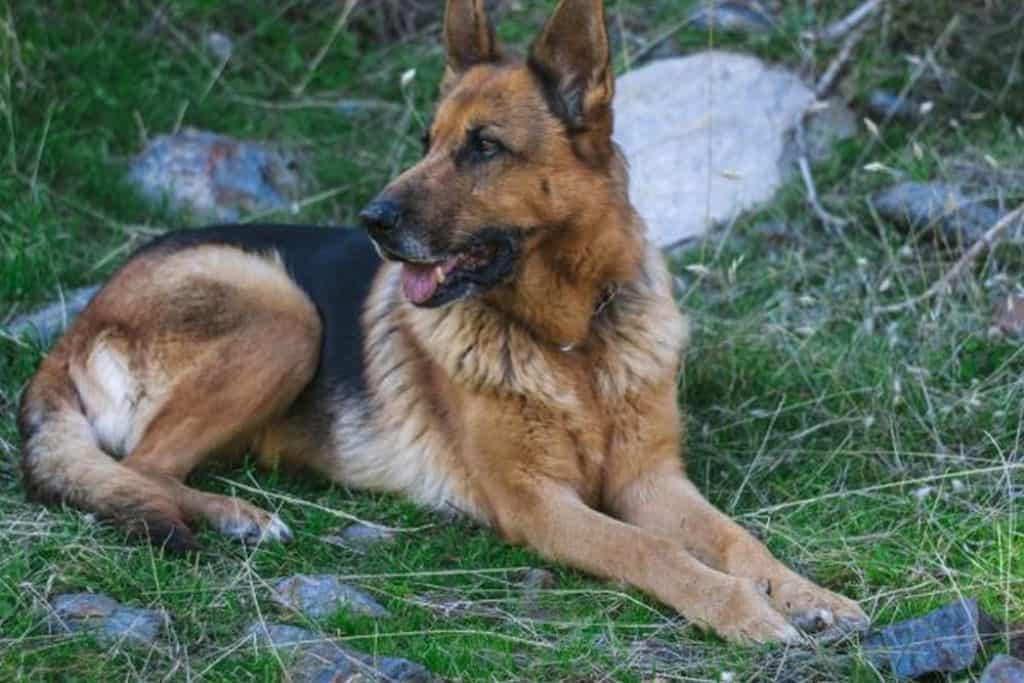
Also known as GSD, Alsatian, Berger Allemand, and Deutscher Schäferhund.
History And Physical Appearance
The German Shepherd is a curious working dog breed that originated from Germany in the late 1800s.
The German Shepherd can reach heights of 22-26 inches and weigh around 34-43kgs as an adult.
They are longer than they are tall, and typically the males are large both in weight and height than the females.
Their short or long (very rare) double coat comes in pleasing shades of black, black and tan, black and silver, gray, sable, and red-black.
This medium-sized dog has erect ears, brown almond-shaped eyes, a square-shaped head, long muzzle, long bushy tail, and slightly angled hind legs.
All of which give it its distinctive physical appearance.
Lifespan And Health Conditions
This sturdy and adventurous dog breed has a lifespan of 9-13 years.
Diseases such as hip and elbow dysplasia, epilepsy, hemophilia (a genetic blood disorder that causes your dog’s blood not to clot), and diabetes have been known to reduce both the quality and life expectancy of this dog breed.
Nutritional Requirements
German Shepherds tends to thrive and lead a healthy dog life when fed with foods rich in quality proteins.
Please make sure that you don’t only feed your hound with dry or wet commercial food.
If possible, spare 2-3 days to make it home-cooked meals.
Consider cooking for your lifetime companion chicken, turkey, or sea meat.
Pro-tip; Since a German Shepherd is likely to ignore ‘your’ veggies, finely chop the veggies and mix them in its cooked food. Also, don’t use spices, and definitely don’t overcook your dog’s food.
Grooming Needs
Washing your German Shepherd at least once every month is enough.
Always use warm water and a dog-safe shampoo. Ensure that you brush its hair at least 3 times in a week.
Brushing your dog’s teeth largely depends on the type of diet you feed it.
For instance, if you feed your dog wet food, consider brushing its teeth at least 5 times a week.
Temperament
Due to their easy-to-love personality, the German Shepherds are the 2nd most popular dog breed out of 193 dog breeds registered by the American Kennel Club.
These hounds are renowned for their intelligence, loyalty, alertness, boldness, confidence, easy to train, and affectionate nature.
However, these hounds have the potential of becoming stubborn and aggressive when insufficiently socialized and trained at a young age.
To avoid having a strong-willed GSD in your home, have it socialized and trained in its basic obedience commands by a professional doggy trainer.
Kangal Vs German Shepherd – What’re Their Differences?
| Kangal | German Shepherd |
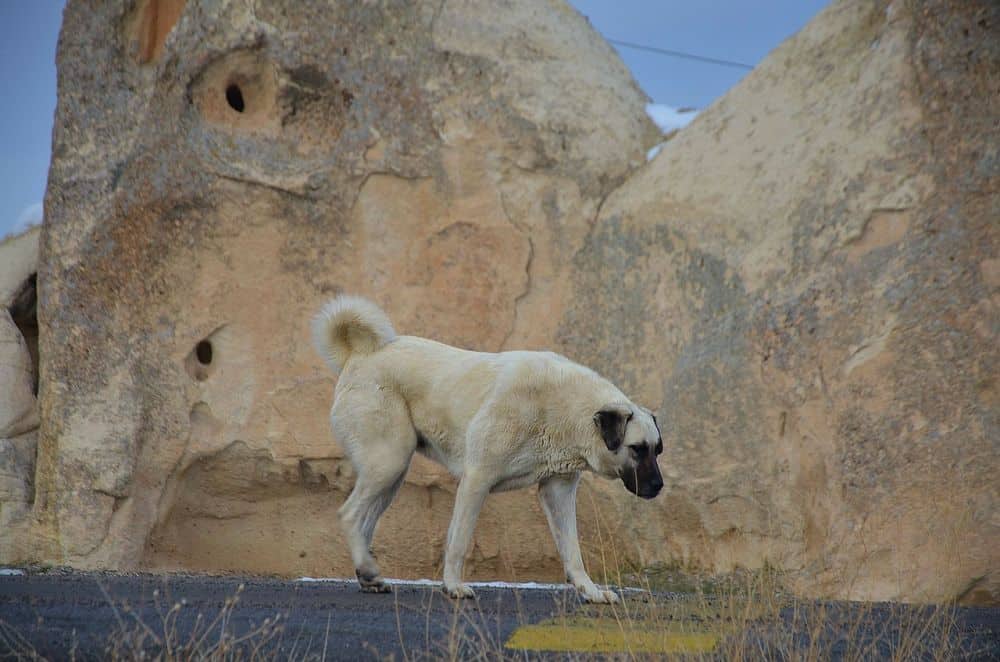 | 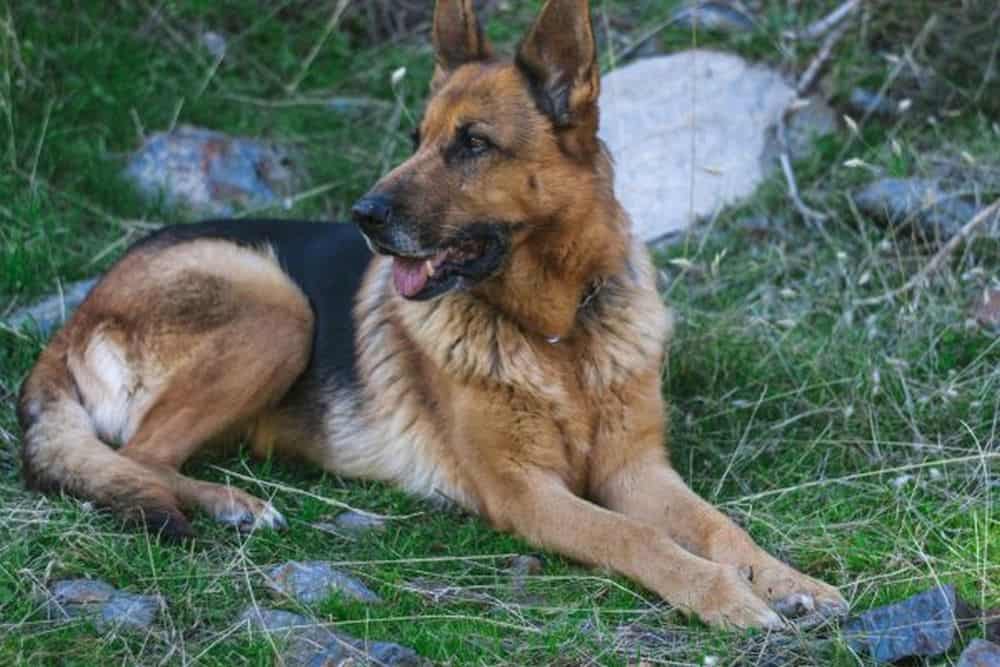 |
Country Of Origin And Year Of Origin
The Kangal dog breed was bred in Turkey around 700AD, whereas the German Shepherd dog’s country of origin is Germany, and it was bred in late 1800.
This makes the Kangals the oldest dog breed between the two.
Size
The Kangals can grow to a height of 28-32 inches and weigh around 38- 68 kgs as adults.
On the other hand, the German Shepherd can reach heights of 22-26 inches and weigh around 34-43kgs as an adult.
This makes the Kangal more prominent in size between the 2 breeds.
This also means that German Shepherd dogs make excellent family, watch or guard dogs in a household with toddlers or small kids due to their medium size.
Lifespan
The Kangal dog breed has a lifespan of 12-15 years, whereas the German Shepherd dog breed has a life expectancy of 9-13 years.
This means the Kangal outlives the German Shepherd.
Health
Kangals are relatively healthier than the German Shepherds since they are less predisposed to both acquired and hereditary medical conditions.
Living space
The Kangals cannot live in an apartment or in a home that has a small or medium backyard.
A German Shepherd can comfortably adopt living in an apartment or in a home that has either a small, medium, or large backyard.
This makes the German Shepherd dog breed a good fit for city dwellers and the Kangal a good fit for a dog enthusiast who owns a large backyard or lives in the countryside.
Temperature Tolerance
Kangals can tolerate low temperatures of -6.6°C to 26.6°C, whereas the GSD can tolerate temperatures of 4.4°C to 29.4°C.
This means that the Kangals can tolerate extremely low temperatures, whereas the German Shepherds can only tolerate living in warm places.
Shedding And Allergy Eliciting Potential
Kangals shed less and are less likely to elicit an allergic reaction caused by dog dander.
On the other hand, German Shepherds tend to shed a bit more and can easily elicit an allergic reaction to people who are sensitive to dog dander.
Drooling Tendency
German Shepherds drool more when compared to the Kangals.
Litter Size
Kangals have a litter size of 5-10 puppies, whereas the German Shepherd dog breed may have a litter size of 1-15 pups.
Approximate Cost
In order to adapt a healthy adult/pup Kangal, it will cost you$1200-$4000.
Adopting a German Shepherd dog from a reputable breeder will cost you approximately $500-$1000.
This makes the Kangal dog breed to be more expensive to adopt.
Kangal Vs German Shepherd – Which One Should I Adopt?
Kangal Vs German Shepherd both make excellent watchdogs, guard dogs, and family dogs.
However, the Kangals are not a good fit for novice dog parents due to their strong-willed and sometimes aggressive nature.
Kangals’ gigantic size also doesn’t make them an ideal dog for a family who has small kids/toddlers.
I would recommend getting yourself and your family a German Shepherd if you have toddlers or kids around.
They are both very vocal, have high grooming requirements, and are also kid and pet friendly, provided they are socialized at a young age.
Despite both breeds being healthy, the Kangal is healthier between the 2 dog breeds.
This is so as it is less susceptible to both acquired and hereditary diseases when compared to the German Shepherd.
The Kangal also has a longer life span than the German Shepherd dog. Both dogs are not hypoallergenic.
However, the GSD has a high risk of eliciting an allergic reaction to a sensitive dog parent as it sheds way more and has a lot of dander when compared to the Kangal.
Kangals are expensive, more prominent, and cannot tolerate living in apartments or homes with small backyards.
Kangal has a litter size of 5-10 pups, whereas a GSD has a litter size of 1-15 puppies.
NOTE! It’s vital that you have your dog momma neutered or sprayed after it has whelped (given birth to) three litters.
This helps prevent the development of future health complications associated with excessive whelping.

